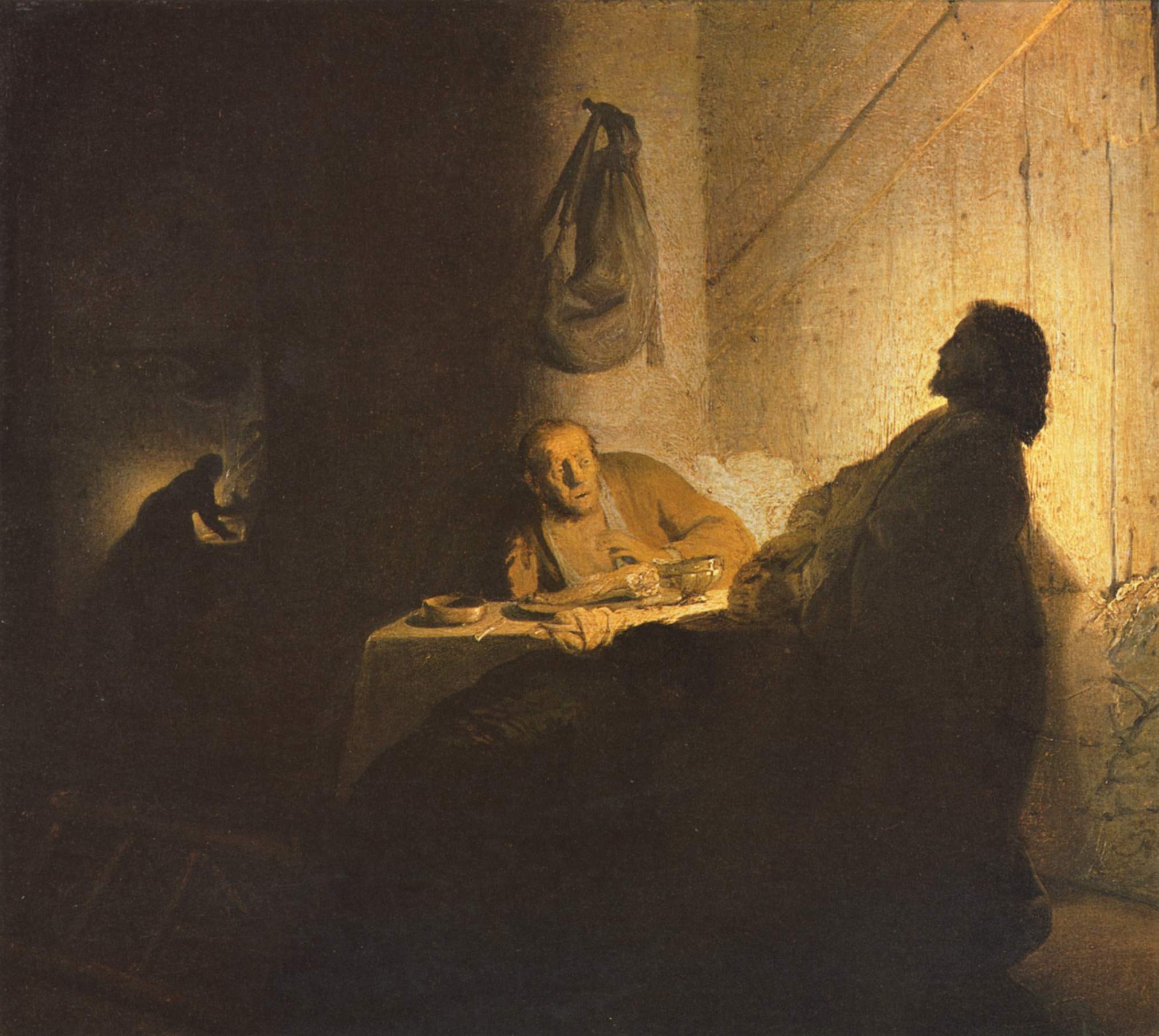In a lecture at the Metropolitan Museum of Art in New York City, curator of the Department of European Paintings Walter Liedtke takes a look at the life and works of the 17th-century Dutch artist Rembrandt. Over the course of the lecture, we can see the influence of the Old Masters in the artist’s work and the evolution of his style as well patterns that carry across his artistic career, such as the combination of observation and style and the application of studies in final works of similar or diverging subjects.
Here’s a breakdown of the lecture:

Portrait of Jan Six, Rembrandt van Rijn, 1654, oil on canvas.
- The Old Masters (specifically Leonardo da Vinci, Raphael, Caravaggio, and Titian) greatly impacted Rembrandt’s body of work. One example of the former is the artist’s Portrait of Jan Six, which exhibits a kind of pyramidal composition taken from Titian’s 1509 portrait Ariosto, which in turn takes after Renaissance sculptural busts, which then go back to sculpture from antiquity. Talk about a long genealogy!
- In a similar vein, Rembrandt was known to have drawn studies of engravings as well as models and to apply them to the compositions of his paintings. One example is a drawing after an engraving of da Vinci’s Last Supper, from which the artist subsequently lifts figures for paintings like Wedding of Samson (in which Christ becomes the bride of Samson and Samson adopts a pose of one of the astonished Apostles) and Supper at Emmaus (1648).
- Rembrandt didn’t market his self-portraits as, well, self-portraits. Instead, they were “expression studies” used to demonstrate his artistic ability. He used these as he did with his other studies: to lift facial expressions and poses for use in other works.
- Local art also exhibits a clear influence on Rembrandt’s paintings. His Presentation in the Temple, for example, reflects what Liedtke calls his “constant synthesis between northern style and other selected artists.” The figure of St. Joseph, cast in deep shadow, recalls Dutch landscapes of the 1620s that also make use of deep shadow that covers part of the canvas.
- Similarly, the presentation of Rembrandt’s works also reflects local culture. His paintings were mostly created for domestic settings, to be held and observed or hung on a wall. As a result, they bear a personal and intimate quality, even in their subject matter. At times he looked to his family to model for him–his mother in Old Woman Reading the Bible, his father in Old Man in Armor, and his wife in Bathsheba–effectively humanizing Biblical subjects in history paintings.

Supper at Emmaus, Rembrandt van Rijn, 1629.

Supper at Emmaus, Rembrandt van Rijn, 1648.
Compare the focal point and the use light and shadow of with those of the earlier work.
- Over time, his work matures from a Baroque, Caravaggio-influenced style to a quieter, less dramatic one, which is most evident through the comparison of two versions of Supper at Emmaus, separated by a period of 20 years.
- The separation of what Liedtke calls observation and style is a concept that “we, as the inheritors of Realism, Impressionism, etc.” have adopted in recent centuries. It entails a differentiation between naturalism, or works that are true to life, and stylization, or works that are abstracted. Rembrandt, however, combines the two. We see the more loosely-painted style of Rembrandt’s later period or the more theatrical style of his earlier period incorporated into meticulous depiction of texture, scenes from life, and humanized elements that recur over and over in his work.
That’s a lot to unpack! But we can see some Core themes emerging in Rembrandt’s methods of painting. Looking to the past (and to the present), evolving and maturing one’s way of thinking over time… These are all concepts with which we’ve grown familiar in Core.

5 Comments
Rick Cardinal posted on November 15, 2019 at 7:45 am
Don’t laugh but I think I found a painting of Rembrandt as Christ caring the cross. Panel dates from 1620s. Would someone take a peek at this ? Has a faded Rem….. at the top left
zakbos posted on November 15, 2019 at 9:00 am
No laughing here. Why don’t you drop us a line about it? If nothing else, it sounds like it’d be a fascinating conversation. And of course, we have plenty of friends in the art history and curatorial world. Our email is core@bu.edu.
Mario Quintanilla MD posted on May 25, 2020 at 5:22 pm
Is a posthumous twentieth century Rembrandt etching worth much? How can someone place a value on it?
CAS Core Curriculum posted on May 26, 2020 at 9:17 am
Our best recommendation is to inquire with a local appraiser or auction house. They may have the expertise to identify the provenance of a document like an etching, and will certainly have a sense about market value.
Rick posted on June 20, 2021 at 12:14 am
I’m sending you some very interesting paintings from the collection of George Way. He was a famous Dutch collector. You will not believe what I found cleaning two of his paintings.